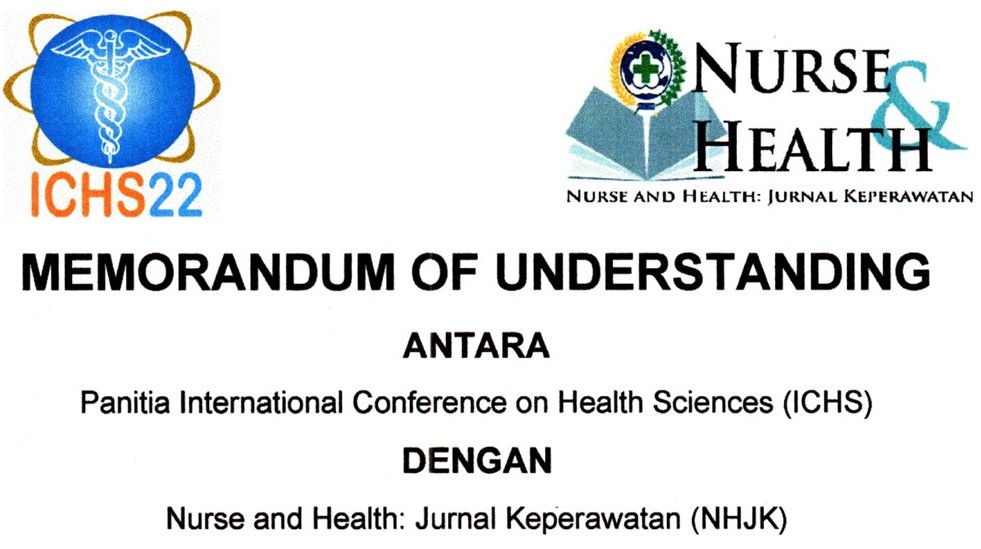PARENTING STYLES RELATED TO BEHAVIOR AUTONOMY ON TEENAGER AT JUNIOR HIGH SCHOOL 26TH, MALANG CITY
Abstract
Background: Parenting styles is the parent’s model in parenting. By choosing one of parenting styles will influence the relationship between parent and kid. Especially when they started to grow up and became a teenager (McClure et al., 2004).Objectives: This research aimed to analyze correlation between parenting styles and behavior autonomy of teenager at Junior High School 26th, Malang City.Methods: This research used cross sectional approach, by observing the relationship between parenting styles and behavior autonomy of teenager at SMP 26 Malang city. The research was located at SMP 26 Malang city, on October 2019. They filled in the research questionnaire. The population of research was the female student grade-XIII at SMPN 26 Malang city. The Parenting Styles questionnaire was modified from the Parenting Style Questionnaire likewise for The Behaviour Autonomy from Behavioral Autonomy Questionnaire with an acceptable level of reliability score (α = 0,8; Cronbach’s alpha ≥ 0.6). The study population was 80 students from grade XIII SMPN 26 Malang. In a total of 77 students recruited using purposive sampling as the study participant. The univariate data is analyzed using distribution frequency analysis, and the chi-square test (sig level α = 0.05; CI = 95%) is used to analyze the correlation between variables. SPSS is used for whole data analysis.Results: Univariate analysis used an analysis by looking at frequency-distribution. Bivariate analysis knew the relationship of independence variable towards dependence variable with statistical-exam chi-square and the limit was (α=0,05) or confidence Interval (CI)=95% processed by using SPSS program. The result of chi-square was gotten p value = (0,002) < (0,050) so that H1 was received.Conclusion: Parenting styles related to behavior autonomy of teenager at Junior High School 26th, Malang City. The study results are expected to increases the relationship between parenting styles and behavior autonomy among adolescents. Keywords: Parenting Styles, Behavior Autonomy, Teenager, Junior High School 26th of Malang City.Downloads
References
Ali, M., & Asrori, M. (2009). Psikologi remaja pengembangan peserta didik, edisi 6. Jakarta: PT. Bumi Aksara.
AS’ARI, M. H. (2015). Hubungan antara pola asuh otoriter dengan kemandirian (Doctoral dissertation, Universitas Muhammadiyah Surakarta).
Baumrind, D. (2005). Patterns of parental authority and adolescent autonomy. New directions for child and adolescent development, 2005(108), 61-69.
Hidayati, N. I. (2014). Pola Asuh Otoriter Orang Tua, Kecerdasan Emosi, dan Kemandirian Anak SD. Persona: Jurnal Psikologi Indonesia, 3(01).
Istiningtyas, A. (2010). Hubungan Antara Pengetahuan dan Sikap Tentang Gaya Hidup Sehat dengan Perilaku Gaya Hidup Sehat Mahasiswa di PSIK Undip Semarang. Jurnal Kesehatan Kusuma Husada.
Israfil (2015). GAYA PENGASUHAN ORANGTUA DENGAN PERILAKU BERMASALAH PADA ANAK TAMAN KANAK-KANAK (TK). EXPERIENTIA: Jurnal Psikologi Indonesia, 7(1), 11-18.
Izzaty, R. E., & Nuryoto, S. (2006). Prediktor Permasalahan Perilaku Anak Usia Tk= Predictors of Behavioral Problems of Kindergarteners. Sosiosains, 19(2006).
Maramis, W. F., & Maramis, A. A. (2009). Catatan ilmu kedokteran jiwa edisi 2. airlangga university Press.
McClure, E. B., Monk, C. S., Nelson, E. E., Zarahn, E., Leibenluft, E., Bilder, R. M., ... & Pine, D. S. (2004). A developmental examination of gender differences in brain engagement during evaluation of threat. Biological psychiatry, 55(11), 1047-1055.
Notoatmodjo, S. (2005). Metodologi penelitian kesehatan cetakan ketiga. Jakarta. PT. Rineka Cipta.
Notoatmodjo, S. (2010). Metodologi penelitian kesehatan.
Palupi, T. (2017). Hubungan antara sikap dengan perilaku pro-lingkungan ditinjau dari perspektif theory of planned behavior. In Proceeding Biology Education Conference: Biology, Science, Enviromental, and Learning (Vol. 14, No. 1, pp. 214-217).
Robinson, C. C., Mandleco, B., Olsen, S. F., & Hart, C. H. (2001). The Parenting Styles and Dimensions Questionnaire (PSDQ). W: BF Permultter, J. Touliatos & GW Holden (red.), Handbook of family measurement techniques: vol. 3 Instruments and index (p. 319–321).
Rifameutia, T. (2004). Kegemaran Membaca Sebagai Faktor Pendukung Meningkatnya Kreativitas.
Yusuf, E. A. Masalah Emosi dan Perilaku pada Anak Penderita Hipotiroid Kongenital.
Zulkaida, A., Made Taganing Kurniati, N., Retnaningsih, R., Muluk, H., & Rifameutia, T. (2012). Pengaruh Locus of Control dan Efikasi Diri Terhadap Kematangan Karir Siswa Sekolah Menengah Atas (SMA).
Authors who publish with Nurse and Health: Jurnal Keperawatan agree to the following terms:
- Authors retain copyright licensed under a Creative Commons Attribution-NonCommercial 4.0 (CC BY-NC 4.0), which allows others to remix, tweak, and build upon the authors' work non-commercially, and although the others' new works must also acknowledge the authors and be non-commercial, they don't have to license their derivative works on the same terms.
- Authors are permitted and encouraged to post their work online (e.g., in institutional repositories or on their website) prior to and during the submission process, as it can lead to productive exchanges, as well as earlier and greater citation of published work (See The Effect of Open Access). Authors can archive pre-print and post-print or publisher's version/PDF.








_resize1.jpg)















